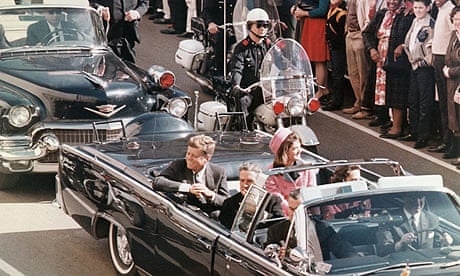New York, November 22
President John Fitzgerald Kennedy, the thirty-fifth President of the United States, was shot during a motorcade drive through downtown Dallas this afternoon. He died in the emergency room of the Parkland Memorial Hospital 32 minutes after the attack. He was 46 years old, and is the third President to be assassinated in office since Abraham Lincoln and the first since President McKinley in 1901.
Late this afternoon, the Dallas police took into custody a 24-year-old former marine, Lee H. Oswald, who is alleged to have shot and killed the policeman outside a cinema. He is said to have remarked only: "It is all over now." He is the chairman of a group called the "Fair Play for Cuba Committee," and is married to a Russian girl. He is described at the moment as "a prime suspect."
President Kennedy is succeeded at once by the Vice-President, Lyndon Baines Johnson, a 55-year-old native Texan, who took the oath of office in Dallas at five minutes to four at the hands of a woman Federal Judge.
This is being written in the numbed interval between the first shock and the harried attempt to reconstruct a sequence of fact from an hour of tumult. However, this is the first assassination of a world figure that took place in the age of television, and every network and station in the country abandoned its daily grind and took up the plotting of the appalling story. At this hour, it begins to form a grisly pattern, contradicted by a grisly preface: the projection on television screens of a happy crowd and a grinning President only a few seconds before the gunshots.
The President was almost at the end of his two-day tour of Texas. He was to make a luncheon speech in the Dallas trade mart building and his motor procession had about another mile to go. He had had the warmest welcome of his trip from a great crowd at the airport, and the cries and pleas for a personal touch were so engaging that Mrs Kennedy took the lead and walked from the ramp of the presidential plane to a fence that held the crowd in. She was followed quickly by the President, and they both seized hands and forearms and smiled gladly at the people.
The Secret Service and the police were relieved to get them into their car where Mrs Kennedy sat between the President and John B. Connally, the Governor of Texas.
The motorcade was going along slowly but smoothly when three muffled shots, which the crowd first mistook for fireworks, cracked through the cheers. One hit the shoulder blade and wrist of Governor Connally. The other brought blood trickling from the back of the head of the sitting President. His right arm flopped from a high wave of greeting and he collapsed into the arms of Mrs Kennedy, who fell unharmed. She was heard to cry, "Oh no!" and sat there all the way cradling his head in her lap.
The President was taken to the emergency room of the Parkland Hospital and Governor Connally was taken into surgery. Mrs Kennedy went in with the living President, and less than an hour later came out with the dead man in a bronze coffin, which arrived shortly after two priests had administered the last rites of the Roman Catholic Church. The body was escorted by Generals Clifton and McHugh, the President's chief military and Air Force aides, to the Dallas Airport and flown thence to Washington.
Within an hour of the President's death, the Secret Service had found a sniper's nest inside the building from which the first witnesses swore the bullets had been fired. It is a warehouse for a school text book firm, known as the Texas School Depository, on the corner of Elm and Houston Streets. In an upper room, whose open window commanded the route of the Presidential motorcade, the Secret Service men found the remains of a fried chicken and a foreign rifle with a telescopic sight. Alongside it lay three empty cartridge cases.
In the Senate, it so happened that the President's brother, Edward Kennedy, a freshman Senator from Massachusetts, was presiding, when the Chief Democratic Whip, Senator Mike Mansfield, went to the rostrum and told him the news. The Senator put down his gavel and went from the chamber.
The body of the dead President will be taken tonight to Bethesda Naval Hospital, will go to the White House tomorrow, and thereafter will lie-in-state in the Rotunda under the great dome of the Capitol until noon on Monday.
It will then be removed for the burial service, which will be held in St Matthew's Cathedral in Washington.

